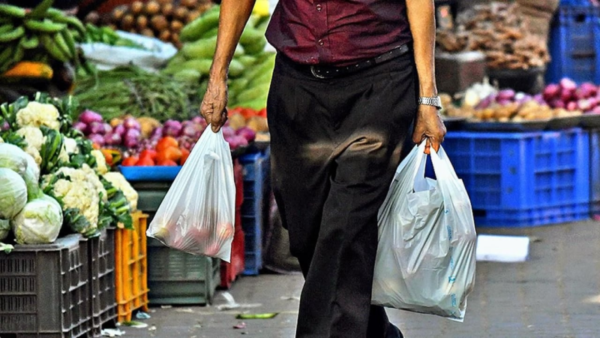India’s household consumption data for November 2024 provides an insightful snapshot of the ongoing economic landscape, revealing both areas of resilience and emerging concerns.
According to recent reports from India’s Ministry of Statistics and Programme Implementation (MoSPI), consumer spending is showing mixed signals as inflationary pressures continue to affect household expenditure.
As November’s data reflects, India’s economy is facing a delicate balance between sustained growth and rising costs that are testing the financial flexibility of many households.
Key Highlights of Household Consumption Data for November 2024
- Growth in Rural and Urban Consumption November’s household consumption patterns indicate a continuation of growth in both rural and urban areas, but with differences in the rate of increase. The average monthly per capita expenditure (MPCE) in rural areas rose to ₹4,122, up by 9% compared to the previous year, while urban areas saw an MPCE of ₹6,996, reflecting an 8% increase. This growth suggests that households across both rural and urban regions are continuing to expand their spending, though at a slower pace than seen in previous months.
However, the urban-rural consumption gap has been narrowing. In 2023-24, the gap reduced to 70% from 84% in 2011-12, marking a significant improvement in rural household spending. This trend is a reflection of government initiatives and increased income opportunities, which have helped boost rural consumption in particular.
- Pressure on Food and Non-Food Items A noticeable trend in the data is the growing divergence in spending behavior between food and non-food items. While expenditure on food remained relatively stable in rural areas, it showed some decline in urban settings. For instance, rural consumers spent more on agricultural products and other essential food items. However, urban households, grappling with higher costs, exhibited more caution. The sharp rise in inflation for food staples, particularly vegetables and cereals, has dampened the appetite for discretionary food purchases.
On the non-food front, spending saw a marked increase, particularly in sectors like transportation, clothing, and entertainment. As households in both urban and rural areas shifted their focus to lifestyle and convenience goods, spending on durable goods like home appliances and furniture increased. This shift reflects a broader trend of prioritizing non-essential items, even in the face of financial uncertainty.
- Inflationary Pressures on Consumer Confidence A key factor influencing the household consumption data for November 2024 is the ongoing inflationary pressures. According to the Reserve Bank of India’s Consumer Confidence Survey for November 2024, the inflation rate in India remained relatively high, particularly for food products, which constrains household budgets. The retail inflation rate for the fiscal year 2024 hovered around 5.5%, well above the Reserve Bank’s comfort zone.
Despite these inflationary challenges, the survey reveals that consumers are cautiously optimistic. A net response of 11.78% in the RBI survey regarding non-essential spending for the year ahead suggests that a majority of consumers remain relatively confident about the future but are still wary of rising prices.
- Sector-Specific Consumption Growth While food expenditures showed some contraction, other sectors continued to exhibit growth.
- For example, spending on transportation services and automobiles remained robust in November, largely driven by demand in the growing middle class. The availability of easy financing options and the expansion of e-commerce have contributed to sustained consumption in these sectors.
Moreover, spending on recreational and cultural services has also increased, reflecting a shift towards experience-based consumption. Consumers are willing to spend on travel, entertainment, and dining out, albeit with greater selectivity.
Economic Factors Driving Consumption Trends
The economic pressures influencing November’s household consumption can largely be attributed to a combination of factors:
- Rising Inflation: Inflation, particularly in food and energy sectors, has squeezed household budgets, forcing consumers to curb discretionary spending. In many parts of the country, food inflation has outpaced general price increases, creating additional financial stress on families.
- Wage Growth and Employment Uncertainty: While India’s economy continues to grow at a strong pace, wage growth has not kept up with the rising cost of living. The disparity between the cost of goods and the rate of wage increases is contributing to subdued consumer sentiment, particularly in urban areas.
- Government Initiatives: Government-led initiatives, including subsidies for rural households and investments in infrastructure, have helped support consumption in rural areas. Despite inflation, rural consumption is showing resilience, a trend that is attributed to the growing purchasing power in villages driven by the agricultural sector and improved access to finance.
Outlook for 2025
Looking ahead, India’s household consumption trends will likely remain influenced by inflation and economic policy responses.
While the government is expected to continue supporting rural incomes and boosting infrastructure investments, there remains a pressing need to address food inflation and wage disparities.
Economic growth is forecasted to remain strong, but real wage increases and inflation control will be crucial in shaping consumption patterns for the upcoming year.
In conclusion, India’s household consumption data for November 2024 underscores the ongoing challenges faced by consumers, particularly in managing rising costs.
However, the resilience in non-food sectors, especially transportation and entertainment, suggests that the Indian economy may continue to experience moderate growth, despite inflationary headwinds.
The balancing act between rising costs and consumer confidence will be key in determining the pace of recovery in the months ahead.
Also Read
Japan’s Household Consumption Trends for November 2024: Navigating Economic Pressures

